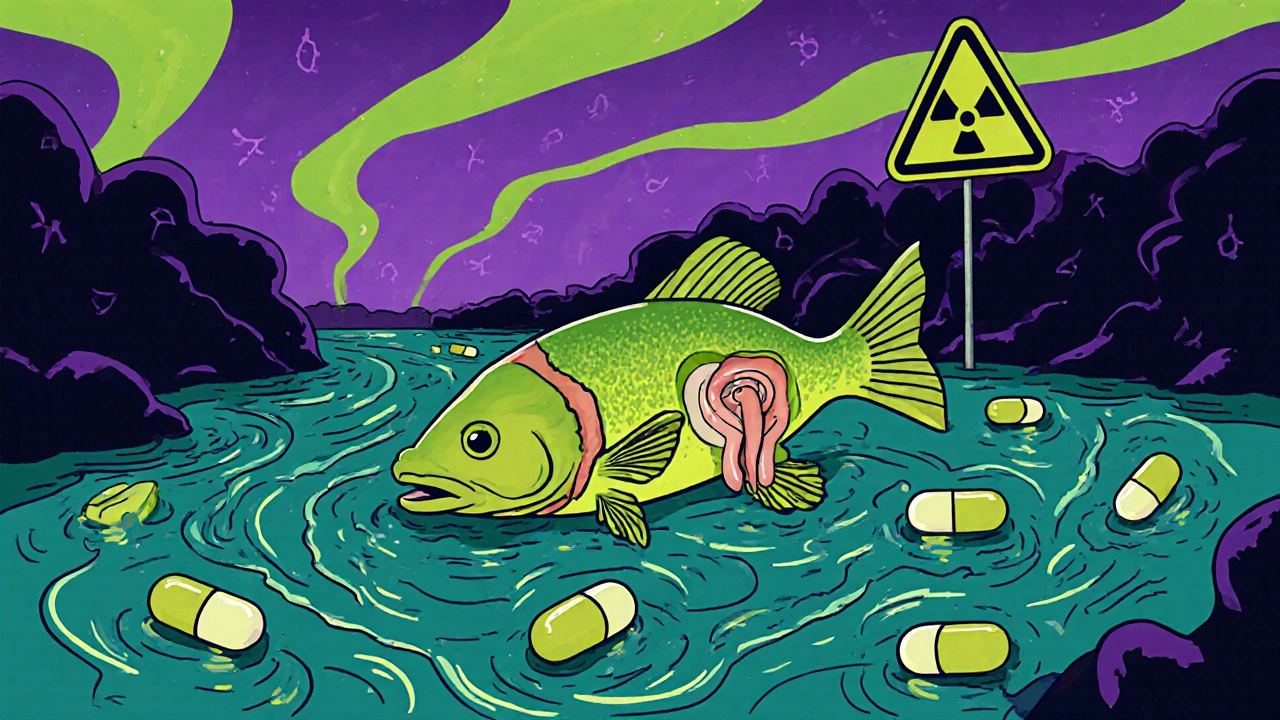Pharmaceutical Pollution: How Medicines Contaminate Water and What It Means for You
When you flush old pills or wash off medication residue, you’re not just cleaning up—you’re adding to pharmaceutical pollution, the unintended release of active drug compounds into the environment, especially water systems. Also known as drug contamination, it’s a quiet crisis that’s showing up in rivers, lakes, and even your tap water. These aren’t just traces. Scientists have found antidepressants, antibiotics, birth control hormones, and painkillers in water supplies across the globe, from rural streams to major city reservoirs.
Where does it come from? Not just from flushing old meds (though that’s part of it). Most comes from human waste—your body doesn’t fully break down every drug you take, so what’s left gets flushed down the toilet. Farms use antibiotics in livestock, and those chemicals end up in runoff. Even generic drugs, low-cost copies of brand-name medications that make up 90% of prescriptions, contribute because they contain the same active ingredients. And when manufacturing plants don’t treat wastewater properly, concentrated drug residues leak into local waterways. This isn’t theoretical. A 2022 study in the U.S. found measurable levels of at least 15 different pharmaceuticals in drinking water sources serving over 40 million people.
It’s not just about fish getting confused or frogs turning gender. Humans are exposed too, through daily drinking and cooking. Long-term, low-dose exposure to these compounds is still being studied, but early signs point to potential disruptions in hormone systems, antibiotic resistance, and impacts on vulnerable populations like pregnant women and children. Water pollution, the broader term for harmful substances entering water bodies from pharmaceuticals is now grouped with microplastics and pesticides as a top environmental health threat.
And here’s the thing: most water treatment plants weren’t built to remove modern drugs. They filter out dirt and bacteria, but not complex chemical molecules. That means even filtered tap water can carry traces. You can’t see it, taste it, or smell it—but it’s there. And while regulators are starting to pay attention, progress is slow. Meanwhile, the problem grows with every new prescription, every unused pill, every factory discharge.
What you’ll find in the posts below isn’t just a list of articles. It’s a real look at how this issue connects to everyday life. You’ll see how environmental impact of medications, the cumulative harm caused by drugs from production to disposal ties into generic drug manufacturing, how public procurement systems in Europe try to reduce waste, and why switching to certain generics can have hidden consequences beyond your wallet. You’ll also find practical advice on how to dispose of meds safely, what to ask your pharmacist, and why this isn’t just an environmental issue—it’s a personal one.

